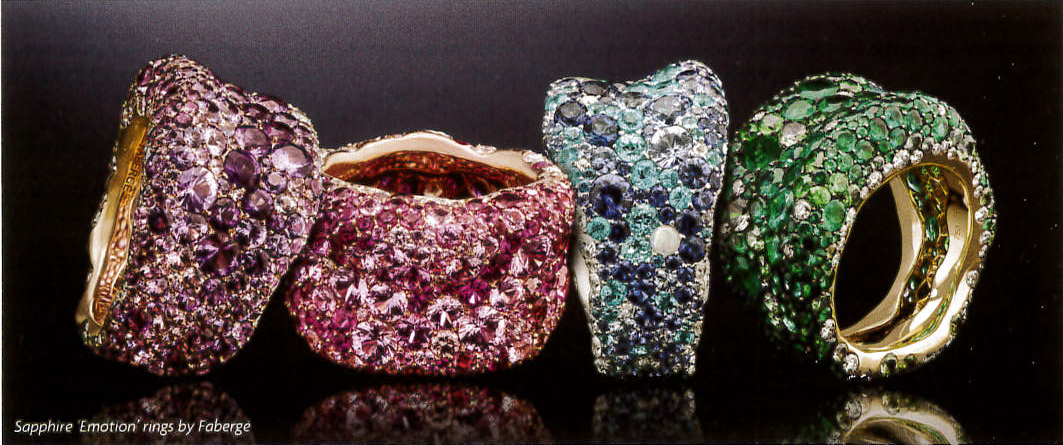Coloured Stone Guide – Sapphires
So what is sapphire?
Sapphire and ruby are basically the same stone, corundum, which, as we saw, is comprised of aluminium and oxygen. The difference with sapphire though is that it is coloured by a range of chemical elements. Pure sapphire is totally colourless, but the colour most people think of when we say sapphire is blue – caused by interaction between iron and titanium atoms within the structure. Sapphire, though, is far more than just a blue stone. It can be found in virtually any colour, usually termed ‘fancy’ in the trade. Greens, yellows, purples, almost any colour is possible, and in some cases even colour-change effects can be found. One colour that is highly sought after is the padparadscha sapphire. Translating from Sanskrit as meaning ‘lotus-coloured’, this variety has a pinkish-red to orange-red colour, and can also be referred to as having the ‘aura of the sunset’.
A little useful mythology
Sapphire is one of the ‘big four’ gemstones for the trade. The more usual blue sapphires have long been thought to be a symbol of truth and nobility, and have often been found in Royal Regalia – most recently in the engagement ring given by Prince William to Kate (previously Princess Diana’s ring). Sapphires were also thought to have the power to protect the wearer from harm, possibly connected to their high degree of hardness which, as with ruby, is nine on the Mohs scale.
How to identify a sapphire
The first thing to remember is colour. No, not just one, but a range, as sapphire can be any colour and can show any degree of transparency. You might not think this important, but combined with its very high degree of hardness, these colours show a bright vitreous lustre, with little damage likely (mainly localised).
As with the red variety of corundum (ruby), sapphires have a high refractive index, 1.76 to 1.78, values that any gemmologist will know well, and this is a key test in their identification. Inclusions can also help, with some showing faint to distinct angular colour zoning. When present, this will follow a hexagonal pattern, which can also help differentiate natural corundums from their labgrown synthetic counterparts. Of course, in the finest quality stones, this zoning may not be present, nor may the needle inclusions that can cause silk and asterism (a six-rayed-star effect seen in some cabochoncut stones). A notable example of this is the Star of India, a large, high-quality blue sapphire, weighing just over 563 ct, and showing a star both on the top and on the base – unusual both for the double asterism and the carat weight.
Finding sapphires
Sapphires can be found all over the world, from Australia to Scotland. Famous and historical deposits include Sri Lanka, Thailand, and the most well-known, Kashmir. Kashmir sapphires possess a rich, blue colour, accompanied by an almost velvety look. True Kashmirs are no longer mined on a commercial basis, and since 1969 very few true Kashmirs have been bought to market, but if you’re lucky, and a lab can place the origin, you may just be privileged to see one. Closer to home, Scottish sapphires are found only in one location, protected as a site of Special Scientific Interest, so technically these could be as rare as true Kashmirs.
Most sapphires, whatever the source, undergo heat treatment, which can improve the colour, or create/remove any silkiness present. This is a centuries-old practice, still carried out today.
Most colours can also be synthesised, so it’s important to keep up to date with detection methods … but as long as they’re sold as what they are, all have a place in jewellery, and all have enduring beauty.

